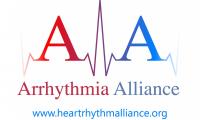The proposed location of the CPAD needs to be:
- easily visible;
- easily and fully described by the Ambulance Service to anyone they instruct to fetch the Defibrillator(including to visitors to the area);
- easily accessible (including at an appropriate height (base of Cabinet approx 1 metre from ground level).
- either accessible to the anyone 24/7 or, if in a location which is not accessible at all times (eg locked at night), has a clear set of hours when the CPAD will be accessible. Factors such as street or other lighting at night should also be considered.
Site Considerations:
- Locating the Cabinet on the outside of a private building / private land is often easier than needing to involve the local authority/ies. An example would be on the Pub wall or a local shop. A private owner can normally give their permission with less bureaucracy. The premise owner will often also assist with any required electrical connections and may well absorb the electric running costs (less than £1 per month).
- Where an external Cabinet is to be attached to a wall, ensure that the owner of the premises and any lessee is in agreement.
- If outside, access to mains electrical power will be required for the Cabinet. This will either be into a 13 amp connection or into a 13 amp connection via a transformer dependent on the type of Cabinet chosen. Cabinet manufacturers strongly recommend installation by a qualified electrician, with an RCD utilised within the connection. Action also needs to be undertaken to ensure that the electrical supply to the Cabinet cannot inadvertently switched off (eg by someone flicking off the power switch or removing the plug to use the socket for alternative purposes).
- The permission of the organisation / individual from which the power is provided should obviously be obtained, along with (written) agreement concerning the payment for this electricity consumed (minimal - £5 - £10 per annum).
- Is the site well lit for access and use at night time – eg by street lighting or can an external light operated by an automatic movement sensor be fitted?
- If located in a Conservation Area, liaison with the Local Planning Dept may be required to ensure there are no planning restrictions. If the Cabinet will overhang the public highway (including pavement), the Council Highways Section must be consulted and permission given.
- A risk assessment should be undertaken (and documented) to ensure that the proposed Cabinet location does not form a potential hazard.

































































